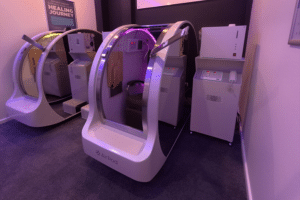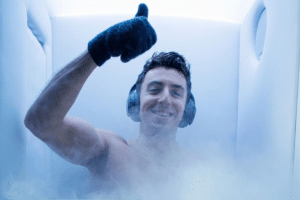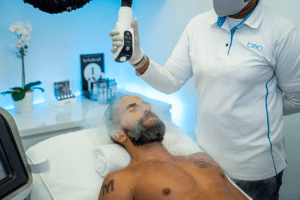Have you ever felt like light has an impact on your body, or that it can create stress? The truth is, light can indeed have a major effect on our bodies and minds. In this article, we’ll go over how light affects our autonomic nervous system, our stress response system, and more.
Autonomic Nervous System
The autonomic nervous system (ANS) is a network of nerves throughout the body that controls unconscious processes like breathing, heart rate, and digestion. This system is essential to our survival and remains active even during sleep. Its main purpose is to connect the brain to the body’s internal organs.
The autonomic nervous system can be divided into two main divisions, the parasympathetic division and sympathetic division. These two divisions are very different, yet equally important to one another. The parasympathetic division is responsible for all the processes in our body that help us ‘rest-and-digest’, while the sympathetic division is responsible for all of our ‘fight-or-flight’ responses. In other words, the sympathetic nervous system activates body processes, while the parasympathetic deactivates, or lowers them. Balance among these two systems is key to our overall health and wellbeing.
Stress Response
More often than not, we spend more time with the sympathetic nervous system active due to stress. Even if we don’t realize it, our bodies can sense stress and react by releasing hormones. This leads to a repeated activation of our stress response system, which over time can take a toll on our bodies. However, not all stress should be considered negative. In fact, the human body is designed to experience stress and react to it as part of our ‘fight-or-flight’ response system. When we experience a new or challenging situation, our bodies produce physical and mental responses that alert and help us adjust. This shows that stress can be positive, but it can become a problem when stressors continue without relief, or periods of relaxation. If we are unaware that the body is continuously under stress, we lose the balance that is needed between the two nervous systems. This results in spending too much time with our ‘fight-or-flight’ system activated.
Light as a Stressor
It’s important to recognize that not all stress is physical, or results from an incident. Our bodies can also be impacted by the environmental stressors that surround us every day. Visible light is one such stressor, and we may not even realize it. Light is responsible for activating hormones that help us stay awake and fall asleep. Cortisol is a hormone that helps us stay alert during the day, while melatonin helps us relax and sleep during the night. Research has shown that exposure to certain types of light at specific times of the day can affect the production of both cortisol and melatonin.
Red and Blue Light
It’s important to note that almost all types of light at night can impact our sleep. However, blue light appears to have the greatest effect as it can stimulate the production of cortisol and disrupt the secretion of melatonin. To learn more about blue light and sleep, click here.
On the other hand, red light has a less negative effect on melatonin. [3] This suggests that red light could be beneficial in helping maintain healthy melatonin levels during evening hours. Red light does not stimulate the production of melatonin, but when compared to blue light, is much less disruptive. As we mentioned before, melatonin is a hormone that helps us relax and sleep better, which aids in the activation of the parasympathetic nervous system.
The Benefits of Red Light
It is beneficial for our wellbeing to maintain a healthy balance between the sympathetic and parasympathetic response states. The use of red light may help us relax, promoting activation of the parasympathetic system. To ensure the best restful sleep, it is best to avoid bright light after dark, and ideal to keep your surroundings as dark as possible 2-3 hours before bedtime. In today’s world, that is easier said than done – and why red light can be a great alternative solution to promote relaxation and good restful sleep.
Summary
Light is an environmental stressor that can keep the body’s stress response system active. In order to stay healthy, it is important to maintain a balance between the sympathetic and parasympathetic response states. The use of red light after dark can help maintain our natural circadian rhythms and bring balance to our autonomic nervous system. Red light is a great alternative to blue light, as it is much less disruptive in melatonin secretion. If you want to ensure a good night’s sleep, try to avoid bright light after dark and use red light instead.






































